THE APPLE OR THE KIT KAT?
As I went about deciding which shirt to wear this morning, I started envying Steve Jobs’ black skivvy and jeans approach to daily living. It was in this green moment I remembered having read a fascinating article published in the Leading Edge Journal by Dr Joel Hoomans which declared we make up to 35,000 decisions each and every day.
Given how many decisions we have to make on a moment by moment basis, it is easy to understand how our minds become rapidly overwhelmed impacting our performance.
Where to start?
As we know “life is about the choices we make”. There are times where we know we should eat the apple, but grab the Kit Kat because it felt good in the moment.
In my work I’m often asked how to best harness the decision-making process to provoke positive outcomes.
Identifying the decision making styles we use on a daily basis is the first step into understanding how we cut through the overwhelm and move towards outcomes.
Let’s start by referring to Frank Graff’s insightful decision-making styles:
Impulsiveness – Leverage the first option you are given and complete the task.
Compliance – Choose the most pleasing, comfortable and popular option as it satisfies the team/s impacted.
Delegating – Not making the decision yourself by pushing it on to trusted others.
Avoidance/deflection – Avoiding or ignoring decisions in an effort to evade the responsibility of their impact.
Balancing – Weighing the factors involved, studying them and then using the information to render the best decision in the moment.
Prioritizing and Reflecting – Putting the most energy, thought and effort into the decisions that will have the greatest impact.
In order to cope with the volume of decisions that have to be made, it is likely that you will be using a combination of these strategies on a daily basis.
Ironically, the first decision is which style to use.
When working out how to make great decisions, it is powerful to know which inputs should be considered and finding the right balance. Dr. Eva M Krockow says, “The first key in understanding how to make great decisions is learning how to synthesize the overwhelming amount of incoming information leaders must deal with on a daily basis, while making the best decisions possible in a timely fashion.”
“By developing a qualitative and quantitative filtering mechanism for your decisioning process you can make better decisions in a shorter period of time.”
Over the years, gut instinct, data, wisdom and intuition will all come into play.
Effective leaders seek the counsel of others who have knowledge, recommendations or experience in the field yet ultimately take the reins and own their decisions and decision-making process.
In Mike Myatt’s Forbes article, he shared that by incorporating the following metrics into your decision framework you will minimise the chances of making a bad decision:
Perform a Situation Analysis: What is motivating the need for a decision? What would happen if no decision is made? Who will the decision impact (both directly and indirectly)? What data, analytics, research, or supporting information do you have to validate the inclinations driving your decision?
Subject your Decision to Public Scrutiny: There are no private decisions. Sooner or later the details surrounding any decision will likely come out. If your decision were printed on the front page of the newspaper, how would you feel? What would your family think of your decision? How would your shareholders and employees feel about your decision? Have you sought counsel and/or feedback before making your decision?
Conduct a Cost/Benefit Analysis: Do the potential benefits derived from the decision justify the expected costs? What if the costs exceed projections, and the benefits fall short of projections?
Assess the Risk/Reward Ratio: What are all the possible rewards, and when contrasted with all the potential risks are the odds in your favour, or are they stacked against you?
Assess whether it is the Right Thing To Do: Standing behind decisions that everyone supports doesn’t particularly require a lot of chutzpah. On the other hand, standing behind what one believes is the right decision in the face of tremendous controversy is the stuff great leaders are made of. “You can’t go wrong by going right.” There are many areas where compromise yields significant benefits, but your value system, your character, or your integrity should never be compromised.
Make The Decision: Perhaps most importantly, you must have a bias toward action, and be willing to make the decision. Moreover, you must learn to make the best decision possible even if you possess an incomplete data set. Don’t fall prey to analysis paralysis, but rather make the best decision possible with the information at hand using some of the methods mentioned above. Opportunities are not static. The law of diminishing returns applies to most opportunities. The longer you wait to seize the opportunity the smaller the return typically is. In fact, the more likely scenario is that the opportunity will completely evaporate if you wait too long to grab it.
Bonus – Always have a back-up plan: The real test of a leader is what happens in the moments following the realization they’ve made the wrong decision. Great leaders understand all plans are made up of both constants and variables, and that sometimes the variables work against you. Smart leaders always have a contingency plan knowing circumstances can sometimes fall beyond the boundaries of reason or control – no “Plan B” equals a flawed plan.
A Small Act that is sure to have a Major Impact is to become aware of your decision-making process and then make sure you have a metrics system in place for measuring it.
… and you may just discover that maybe there is an option to combine both, the apple and the Kit Kat!
Click Here to Book a Coaching Session
Ref – https://www.forbes.com/sites/mikemyatt/2012/03/28/6-tips-for-making-better-decisions/#4e74ce9c34dc

